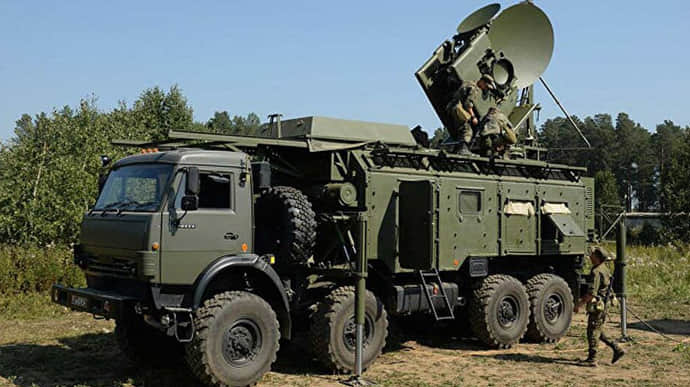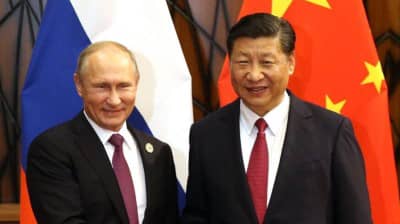Russia has advantage in electronic warfare and uses it to throw Ukrainian HIMARS off course – FT

Russia currently outperforms Ukraine in electronic warfare (EW), having invested in electronic warfare long before the invasion, but Ukraine is trying to catch up. The occupiers have begun to use electronic warfare more frequently to throw off the course of precision-guided Western munitions.
Source: Financial Times
Quote: "Both sides have invested heavily in systems that can neutralise each other’s drone armies, but Moscow maintains the upper hand as it had already focused on these capabilities before launching its full-scale invasion of Ukraine nearly two years ago.
Ukrainian forces are however trying to catch up."
Details: Colonel Ivan Pavlenko, Head of the Electronic Warfare and Cyber Warfare Department of the General Staff of the Armed Forces of Ukraine, said that the Russians have recently been producing so many drones that it is becoming a huge threat: "What’s happening here, the massive use of drones, is new . . . So EW becomes increasingly important."
Pavlenko called on the allies to provide Ukraine with more means that can suppress or replace the global navigation satellite system (GNSS) of Russian-made guided missiles and drones.
In addition, he said, since Russia's electronic warfare systems require high-tech components such as amplifiers, synthesisers, and software, it is important that Western allies impose sanctions on these components.
Russia is also increasingly using electronic warfare to throw off course Ukraine's precision-guided munitions supplied by the West, such as HIMARS missiles and Excalibur artillery shells.
Moscow also uses electronic warfare to simulate missile and drone launches to confuse and locate Ukrainian air defence systems.
Without EW protection, Ukrainian troops are easy targets for drone-guided artillery strikes, bomb-dropping drones and kamikaze drones by blowing up unmanned aerial vehicles.
Electronic warfare systems come in many shapes and sizes, from radar systems and lorry-mounted transceivers to pocket devices. Both sides have rushed to protect their troops by installing makeshift electronic warfare systems, which one Ukrainian engineer said volunteers assemble in garages.
Both Russia and Ukraine retain strong electronic warfare research schools dating back to the Soviet era, but the Russian government has been investing heavily in new equipment for more than a decade.
The Russians are able to use electronic warfare systems along most of the front line.
For example, Russia's Polyus-21 targeting suppression system can be deployed on the ground, on towers or mounted on vehicles and can cover a 150-kilometre radius, according to a military consultancy report provided to the publication.
The Murmansk system uses huge retractable 32-metre high antenna towers mounted on mobile armoured vehicles.
Currently, Ukraine claims to have improved its electronic warfare capabilities with domestically produced systems supplied by Western allies, although details are kept secret.
Ukraine's Bukovel system, which can be mounted on vehicles, detects drones, jams their data transmission and can block satellite guidance systems, including Russia's Glonass. Praising its effectiveness, the Ukrainian military has called on the government to produce many more of these systems.
A new Ukrainian system called Pokrova can reportedly counter missiles by blocking their guidance systems.
Pavlenko said it is very important that F-16 fighter jets are equipped with modern electronic warfare systems, adding that Kyiv is working with allies on this requirement.
Pavlenko added that Ukraine could be used as an electronic warfare laboratory, although he acknowledged that some Western militaries are reluctant to share technology: "Any sophisticated high-tech equipment has software that can be affected. And this is the future. This approach is more promising, and where best to test it if not in Ukraine?"
Support UP or become our patron!







